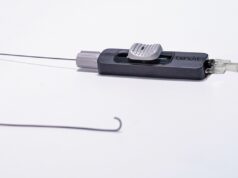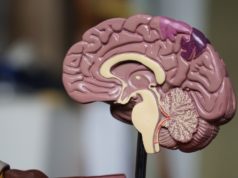
A new concept for navigating the neurovasculature, performed without the aid of a guidewire, has demonstrated its ability to be manoeuvred through tortuous vessels, braided stents and occlusions, and to deliver and move coils, in preclinical investigations involving a rabbit aneurysm model. Details of the study, which utilised the Bendit 17 and Bendit 21 steerable microcatheters (Bendit Technologies), are published in the Journal of NeuroInterventional Surgery (JNIS).
“Our in vivo experience with the Bendit microcatheter supports the effectiveness of its bending and torquing capabilities for navigation and positioning, coupled with its stability in the bent position,” lead author Alejandro Berenstein (Icahn School of Medicine at Mount Sinai, New York, USA) and colleagues report in JNIS. “The Bendit has the potential to treat aneurysms for which conventional microcatheters are not suitable, such as sidewall aneurysms requiring directional control and tip positioning while delivering intrasaccular devices.”
Providing a backdrop for their investigations, the authors note that the endovascular treatment of intracranial vascular diseases, such as aneurysms, is often challenged by unfavourable vascular anatomy. They also claim, however, that the Bendit steerable microcatheter is designed with bending and torquing capabilities for improving navigation and stability during device delivery—with or without a guidewire.
They set out to assess two of these microcatheter devices—the Bendit 17, which has an inner diameter of 0.0165 inches, and the Bendit 21, which has an inner diameter of 0.021 inches—in the treatment of bifurcation and sidewall aneurysms that had been surgically created in six New Zealand rabbits. In their preclinical study, the researchers attempted to navigate Bendit devices through the vasculature of these animal models and enter the aforementioned aneurysms without a guidewire. Berenstein and colleagues detail that various positions within the aneurysm were selectively explored, and angiographic imaging was used to visualise catheterisation, navigation, vascular manipulations, and the placement of coils, stents and intrasaccular devices.
“We successfully navigated the Bendit microcatheters to all aneurysms without a guidewire,” they report, relaying their results in JNIS. “We successfully recanalised a nearly occluded carotid artery and navigated the Bendit through a braided stent. In contrast, we were unable to navigate a comparator device [Headway 21; Microvention/Terumo] with a guidewire as effectively as the Bendit. Coils were introduced at different locations within the aneurysm and could be pushed, pulled, and repositioned with the Bendit tip. Finally, we used the Bendit to deliver intrasaccular devices—designed for terminal aneurysms—to treat sidewall aneurysms.”
Discussing further benefits they observed in these devices, the authors add that the Bendit allows for the precise placement and repositioning of coils within the aneurysm, with the device remaining stable in the bent position. When delivering coils, this stability—along with the ability to micro-torque with more or less articulation—permits better packing density as well as avoiding compartmentalisation and the need to recatheterise poorly packed areas, they claim, noting that this contrasts with coil delivery using conventional, guidewire-assisted microcatheters, whereby it is not uncommon for the microcatheter tip to move.
“The stability of the tip in the bent position prevents the Bendit from being ejected from the aneurysm during device deployment and eliminates the need for additional devices, such as a stent or balloon, to protect the aneurysm orifice,” Berenstein and colleagues write. Expanding on this, they claim that the Bendit 21 can be used to deliver intrasaccular devices like the WEB 17 (Microvention/Terumo) and the Contour neurovascular system (Cerus Endovascular) to wide-neck sidewall aneurysms. Such devices generally cannot be used on sidewall aneurysms because of their tendency to eject present catheters, according to the authors.
When the Bendit tip does get out of position, they continue, it can easily be repositioned without having to withdraw coils or use a guidewire—saving a great deal of time during procedures. Berenstein and colleagues also note that, in their study, after aggressive manipulation of the device within the vessel, there was no evidence of spasm, vessel damage or dissection, or thrombosis observed on angiography or histology. “Therefore, the Bendit has the potential to expand indications for different intrasaccular devices to include sidewall aneurysm embolisation,” they state.
“Bendit’s bending and torquing abilities, combined with its stability in the bent position, enable quick navigation and optimal deployment of devices,” the authors add. “Clinical studies are necessary to determine whether these navigation advantages lead to more efficient treatment of intracranial and peripheral aneurysms.” Berenstein and colleagues do identify several limitations to their study as well, including its qualitative design, the small number of animals used for testing, differing vascular anatomies between rabbits and humans, and limited comparisons with existing techniques, and as such conclude that “the clinical safety and efficacy of the device need further assessment”.









